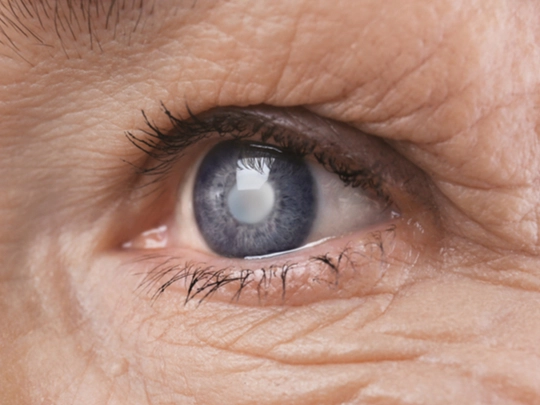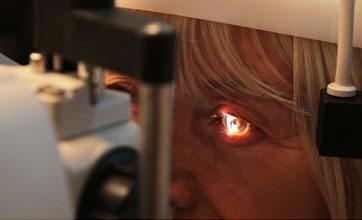
A cataract is the clouding or opacification of the lens of our eye, which is responsible for focusing the image onto the retina.
When the lens loses its transparency due to this clouding, it obstructs the passage of light and images to the retina, leading to vision loss.
If the eye is considered as a camera, a cataract can be likened to the lens in front of the camera becoming frosted. In fact, our eye lens is one of the earliest aging tissues in our body.
 Cataract Eye Lens
Cataract Eye Lens
In individuals without vision problems, around the age of 40-45, the lens loses its ability to focus on near objects, causing a deterioration in close-up vision without glasses. The need for reading glasses begins. Later, between the ages of 60-80, as the lens begins to lose its transparency, cataracts develop, resulting in vision loss that cannot be corrected with glasses. Vision loss starts with mild blurring, fading colors, and glare. As cataracts progress, pseudo-myopia (false nearsightedness) may develop, causing the individual to see near objects without glasses.
Although being able to read without glasses may please the patient, this "second spring" period is temporary. As cataracts advance, both distance and near vision deteriorate to a point where they cannot be corrected with glasses. While cataracts generally affect both eyes equally, one eye may deteriorate earlier in some individuals. Reduced vision not only diminishes our quality of life but can also lead to accidents such as falls or car collisions due to poor visibility.
Video: Prof. Dr. Ahmet AkmanWhat is Cataract? Cataract SymptomsAll Videos
Cataract is not a disease but a natural consequence of aging. Reaching the age where cataracts develop is actually an indicator of our good fortune. If one lives long enough, they will develop cataracts. Therefore, cataract surgery is one of the most commonly performed surgeries worldwide. Last year, 3.5 million cataract surgeries were performed in the USA, and 500,000 in our country. The good news is that cataract surgery is one of the most successful surgeries in medical history.
Prof. Dr. Ahmet Akman, one of the most experienced doctors in cataract surgery in Ankara, has performed over 50,000 cataract surgeries in his 25-year career.
Cataracts, which occur due to the loss of transparency in the eye lens, can actually develop for various reasons and can be seen at any age. Basically, cataracts can be classified into three groups:
The diagnosis of cataract is made through a detailed examination by an eye doctor. The key points during the examination are determining the type of cataract, checking for other pathologies such as macular degeneration that could affect vision, and identifying any other potential issues that could arise during cataract surgery.
 Cataract Diagnosis and Examination
Cataract Diagnosis and Examination
During a cataract examination, the doctor measures the level of vision, tries to understand how much the vision improves with glasses, measures eye pressure, evaluates whether the pupil is dilating properly, and examines the retina for tears and checks the health of the macula. The macula is further evaluated with an eye tomography. Based on the examination results, a diagnosis of cataract is made, and the need for surgery is determined.
If cataract surgery is decided upon, the type of surgery to be performed and the type of lens to be implanted in the eye are discussed and chosen with the patient. Prof. Dr. Ahmet Akman in Ankara is one of the most experienced surgeons in cataract diagnosis and examinations. He applies all types of lenses, including multifocal and toric lenses.
You can call us immediately for detailed information, consultation or appointment.
Contact information